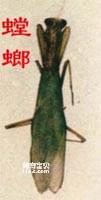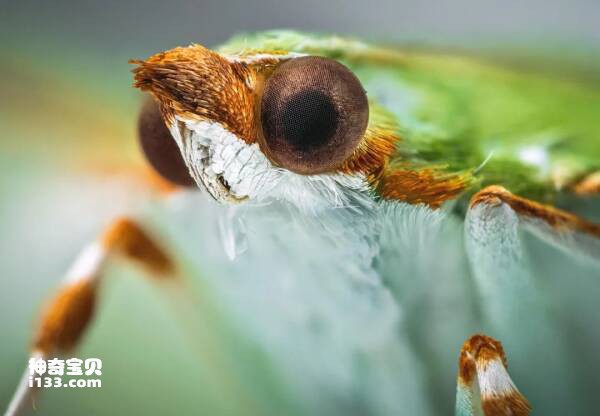Praying mantises are terrestrial predatory insects that are beneficial to humans and must be protected. It has been known to everyone. Praying mantises have ferocious habits and are known to eat carnivores, so they can be regarded as tigers in the class Insecta. Locusts, cicadas, flies, caterpillars, beetles, etc. are all attacked and eaten. Some species of mantis native to South America attack small animals such as birds, lizards, and frogs. Praying mantises are ferocious and aggressive, and even those of the same species often kill each other. Not only does the big one eat the small one, but also the female eats the male. This is a normal phenomenon, so some people call the male praying mantis the "infatuated husband." When mantises are mating, the female mantis sometimes turns around and bites the head of the male mantis first, and then eats the whole body in one mouthful. The male mantis does not make any resistance and allows him to do whatever he wants. It sounds cruel, but in fact, after mating, the female praying mantis urgently needs a lot of nutrients to form the eggs in her belly and to produce a large amount of gelatinous material to wrap the eggs when she lays eggs in the future. The male mantis is dedicated to his children. Although the mantis cannot be used as a car, its thick forearms with sharp teeth and sensitive movements can not only catch cicadas, but even large locusts that can fly and jump can't escape its attack; French entomologist Fabre The process of catching a locust by a mantis is described as follows: "The mantis saw a big gray locust and suddenly assumed a terrifying posture, spreading its wings and extending them diagonally to both sides. Its hind wings stood upright, shaped like a sail, and its body The upper end is curved like a crank, and makes a sound like a poisonous snake's breath. The whole body weight is placed on the four back legs, the front part of the body is completely erect, standing motionless, eyes fixed on the locust, if the locust moves slightly, the mantis will turn its head. The purpose of this move is obvious, which is to drive fear deep into the heart of the victim and paralyze him with fear before attacking. Sure enough, the locust stared at it without moving at all. Although it was originally a high jump and long jump champion in the insect world, it could not escape at that time. It just lay there stupidly, or even moved forward inexplicably. When the mantis gets it with the hook, it hits hard with two claws and presses down heavily with the two saws. At this time, it is useless for the locust to resist and finally becomes its prey. "The ancient proverb goes: "The mantis stalks the cicada, while the oriole follows behind", which illustrates the interdependent food chain relationship between living things in nature.

The mantis is the most unique in shape. The head is triangular, the chest is slender, and the front feet are sickle-shaped catching feet. The forefoot base section is extended, the leg section is wide, and there is a groove on the ventral surface, forming a sheath shape. There is a row of spurs on both sides of the groove, and there are also small spines on the ventral surface of the tibial joint. When capturing or resisting the enemy, put it into the slot. It looks like a knife in a sheath. Clamp the prey firmly to prevent it from escaping easily. Then, chew it with your hard and sharp upper jaw. They often use their knife-like front legs to attack or defend against any enemy. In the idiom "the mantis blocks the cart with its arms and does not know its own capabilities", it is used to describe those who are self-righteous, ignorant of current affairs, and hinder the development of things. When a mantis walks, it touches the ground with its middle and hind feet and walks slowly with its head held high, similar to a horse, so it is called "Pegasus". "The horse flies in the air, comes and goes alone" also expresses the habit of the mantis, which has wings and does not fly often. The little mantis that hatches from the egg sheath lives a solitary life until it grows up.
Except for the extremely cold areas, praying mantises are distributed all over the world, and they are most abundant in tropical areas. They can be found in all parts of our country. About 1,560 species are known in the world, and about 100 species are known in my country so far. It can be found on grasslands, woods, crops, and garden flowers and trees. Because the mantis raises its front legs like a prayer in a religious ceremony, Linnaeus once named the European mantis Mantis religiosa L. Its species name religiosa means belief in religion. Muslims believe that mantises often face Mecca (Saudi Arabia), the birthplace of Muhammad. Arabia) and pray, consider it a religious believer. There is even more superstition that mantises are prophets and have the ability to predict the end of the world.
There are different types of praying mantises with different shapes. It has mimicry in body structure and color. The wings are like a green leaf; the body is green, and most of them are the same color as the surrounding plants. They can hide themselves, confuse prey and capture them. Li Shizhen, a medical expert from the Ming Dynasty in my country, described in "Compendium of Materia Medica" that "the mantis has its head raised and its arms raised, its neck repaired and its belly large, its hands and feet four-legged. It has a good karma and is quick. It has a beard instead of a nose and likes to eat human hair."

A mantis goes through three forms in its life: egg, nymph, and adult. Nymphs and adults are similar in morphology and habits, the only difference lies in the size of the body and the completeness of the wings. One generation per year. They usually lay eggs in late autumn, overwinter with the eggs, and hatch after the Miscanthus Festival (mid-June) the following year. Praying mantises lay eggs in egg sheaths, and their shapes vary greatly depending on the species. One female can lay 4-5 egg sheaths. The outer layer of the egg sheath is a spongy substance, which is solidified by the bubbles secreted by the mother. There are about 40 eggs inside, arranged in four rows. Each row is adhered by colloid, which is easy to harden into a solid muddy body. horny substance for protection. The egg sheath of the mantis is firmly adhered to branches or walls. The one found on mulberry trees is called mulberry mantis, which is a traditional Chinese medicine. Folks roast and crush mulberry octopus and give it orally to children suffering from nocturia, which can cure nocturia in children.
Although the octopus is solid and tight, it is often parasitized by various parasitic wasps. After hatching, the young mantis crawls out of the egg sheath one after another. There is a pair of nipple protrusions on the 10th abdominal plate, which can secrete silk fibers. The body hangs on the fibers and floats and spreads in the wind. But after the second molt, this function is lost. It takes 3-12 times to molt to become a large, sexually mature mantis with large wings.
animal tags: mantis
We created this article in conjunction with AI technology, then made sure it was fact-checked and edited by a Animals Top editor.